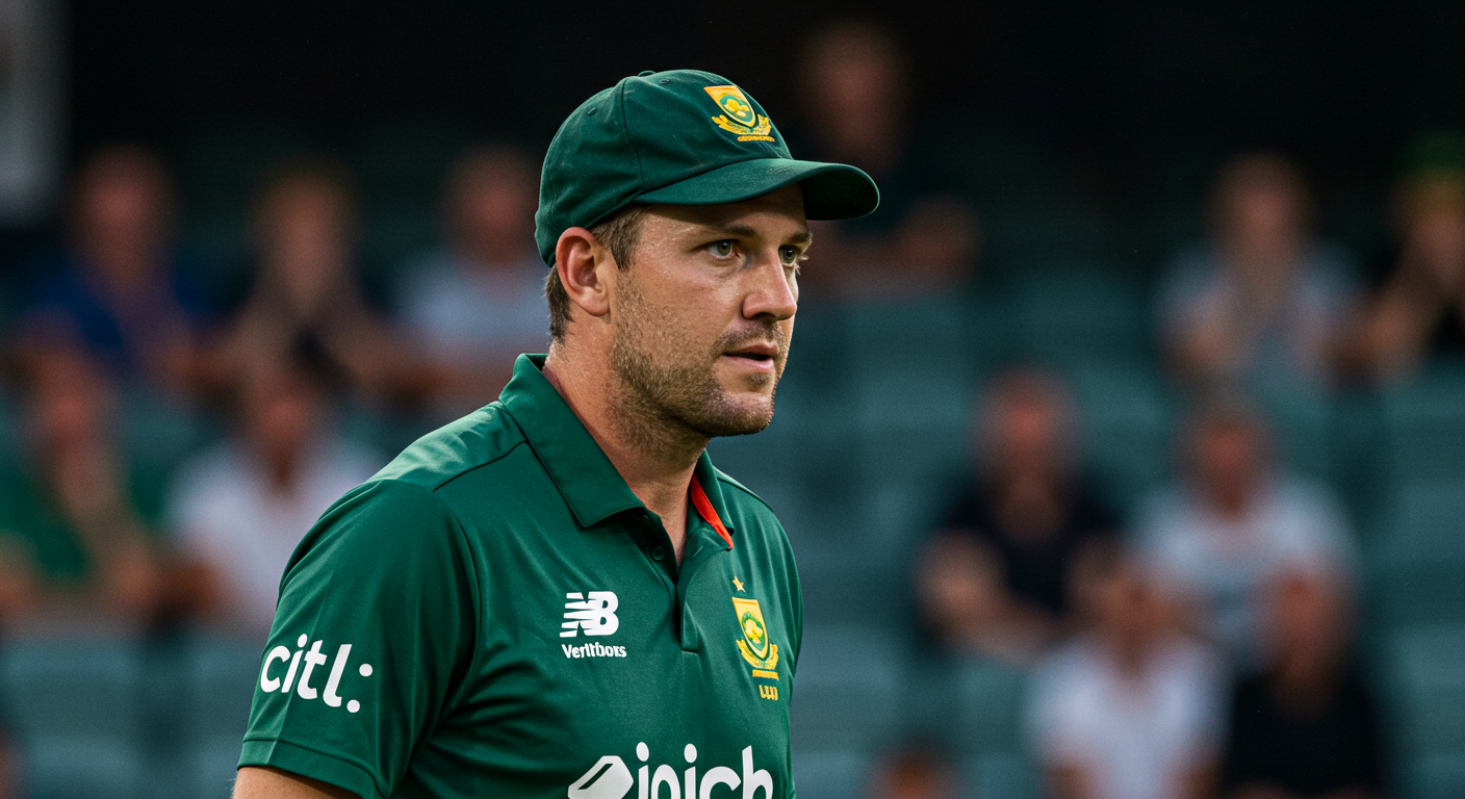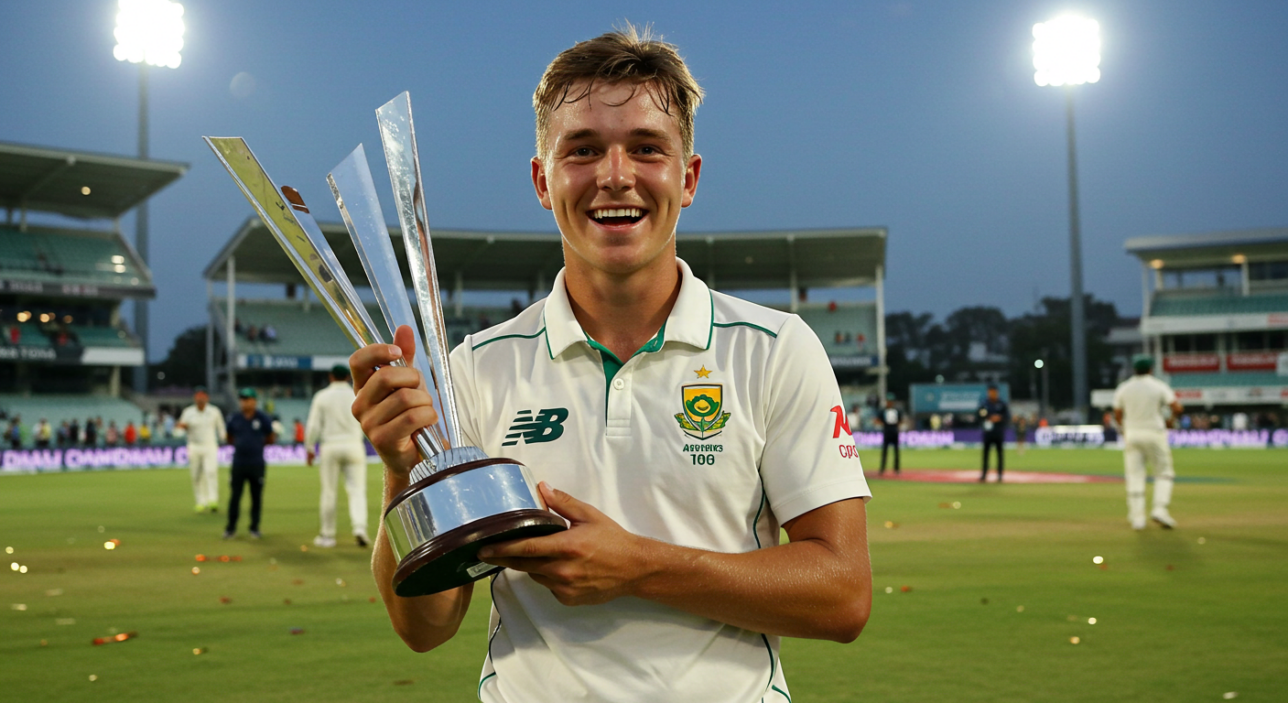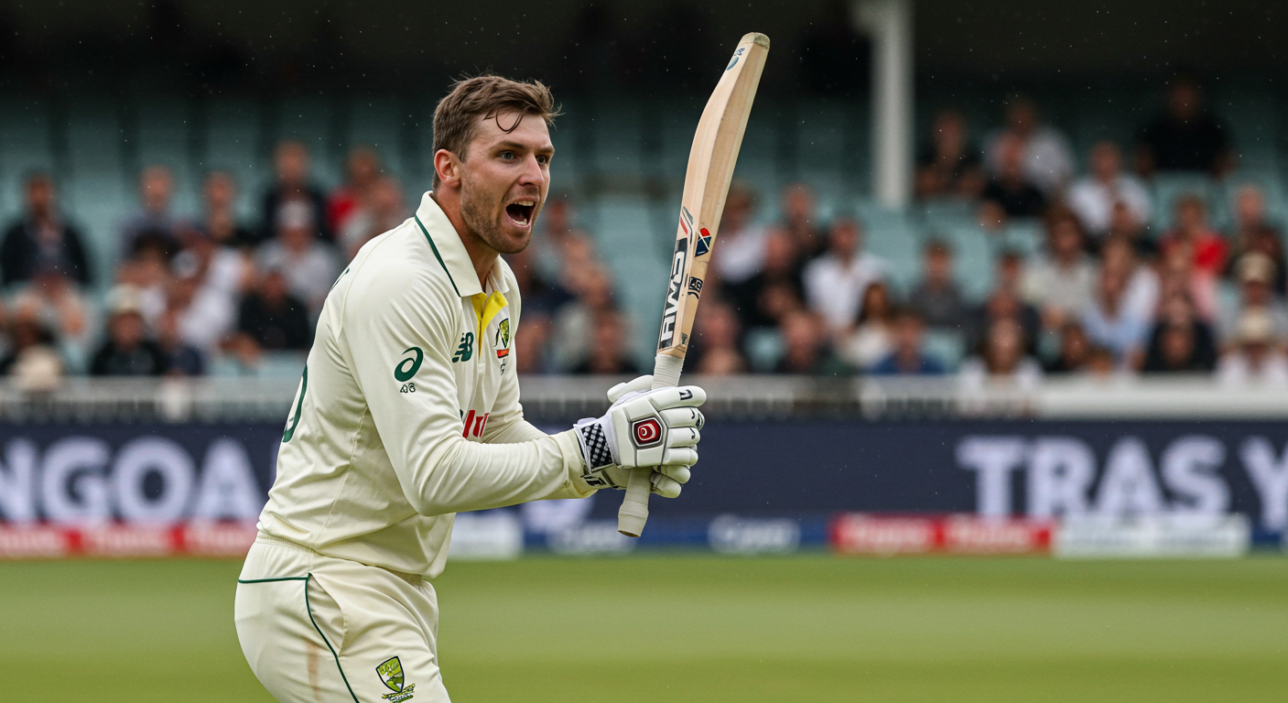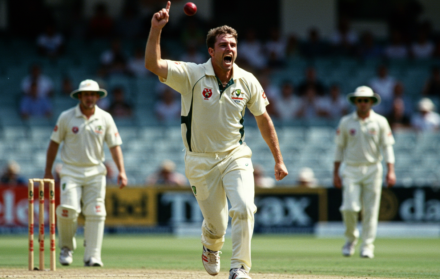
Dewald Brevis: The Future of South African Cricket
In a cricketing nation starved of modern icons since the retirements of Jacques Kallis, AB de Villiers, and Hashim Amla, Dewald Brevis has arrived with a promise: to reignite belief in South African batting brilliance. Still in his teens when the world took notice, Brevis exploded into the global spotlight during the 2022 ICC Under-19 World Cup, finishing as the tournament’s top scorer with a staggering 506 runs. Nicknamed “Baby AB” for his striking resemblance to de Villiers’ shot-making, Brevis has quickly become more than just a novelty—he is now a beacon of hope for a system desperate for rejuvenation.
But what makes Brevis more than just hype? His style blends uncoachable flair with technical maturity beyond his years. His fearless intent doesn’t come at the cost of composure, and his range—from classical cover drives to ramp shots over third man—feels like it belongs to someone who’s been playing international cricket for a decade, not chasing his first major breakthrough.
This article dives deep into what makes Dewald Brevis so captivating: from his U19 World Cup dominance to his transition into franchise cricket, the technical tools in his kit, and the expectations he now carries as the face of South Africa’s next cricketing chapter. He is not yet the finished product—but he might just be the future.
Under-19 World Cup 2022: A Statement on the Global Stage

Dewald Brevis wasn’t supposed to dominate the 2022 ICC Under-19 World Cup. Entering the tournament, he was considered a promising batter—clean striker, decent form, but not necessarily the star. What followed over the course of six matches was an astonishing exhibition of consistency, power, and situational awareness, the kind rarely seen even in senior cricket.
Brevis amassed 506 runs at an average of 84.33, including two centuries and three fifties. His strike rate hovered around 90—impressive in youth one-day cricket—but it wasn’t just the weight of runs that impressed. It was the way he made them. Against Uganda, he scored 104 with elegance; against England, 97 under pressure; and in the quarterfinal against Sri Lanka, he smashed 138 in a knock that combined patience with explosive acceleration.
Observers were quick to draw comparisons to AB de Villiers—not just because Brevis had modelled parts of his game after the South African great, but because he played with similar confidence. His bat swing, open stance, and ability to improvise made it clear: this wasn’t a player who fit into a mould. He created his own.
The tournament also highlighted his cricketing intelligence. Brevis was seen constantly communicating with teammates, adjusting fields, and planning innings like a seasoned tactician. Even though South Africa didn’t go all the way, Brevis emerged as the story of the tournament—a young player who wasn’t just ready for the next level, but already thinking like a professional.
What made it more impressive was his attitude. After his record-breaking run tally, Brevis calmly shifted focus back to training, crediting his coaches and teammates. There was no cockiness—just clarity. And for a cricketing nation hungry for heroes, that clarity was a sign that this wasn’t a spark—it could be the start of a fire.
The T20 Circuit: Brevis Goes Global
Fresh off his Under-19 World Cup exploits, Dewald Brevis entered the next phase of his journey: the world of franchise cricket. It didn’t take long for teams to circle. In April 2022, Mumbai Indians signed him for the IPL, and while his price tag was modest, the expectation was massive. Brevis was stepping into the same dressing room once occupied by his idol, AB de Villiers—albeit via a different franchise—and all eyes were now on whether he could translate youth-level dominance into big-league performance.
He didn’t disappoint. In only his second IPL match, against Punjab Kings, Brevis smashed 49 off 25 balls, including a jaw-dropping 112-metre six that left commentators momentarily speechless. Nicknamed “Baby AB” by Indian fans almost immediately, Brevis brought an exciting fearlessness—stepping down to quicks, reverse sweeping spinners, launching balls over extra cover—and did so with a calm, self-assured body language. He wasn’t overwhelmed. He was in rhythm.
But his impact wasn’t limited to India. Soon after, he lit up South Africa’s new SA20 league with MI Cape Town, where he opened the tournament with an aggressive 70 off 41 balls. Again, it wasn’t just the runs—it was how he made them. His ability to shift gears, pick matchups, and maintain composure under pressure was rare for someone barely 20. He quickly became one of the league’s poster boys, marketed as the next-gen South African icon.
Of course, there were quiet innings too—T20 is unforgiving. But in each franchise stint, whether in the CPL, IPL or SA20, Brevis has showcased glimpses of his ceiling. The timing, the intent, and the fearlessness all signal that he’s not just a one-tournament wonder. He’s learning, adjusting, and gathering global experience that few South African players his age have ever had.
In a cricket economy driven by T20 leagues, Brevis is perfectly positioned. And unlike many power-hitters, his game is built on a foundation of technique—not just brute force, but controlled aggression with an expanding shot library. That makes him dangerous now, and potentially elite in the years to come.
Technical Blueprint: Power with Precision

Dewald Brevis is no textbook batter—and that’s precisely what makes him fascinating. While he borrows elements from de Villiers, Brevis is steadily carving out his own batting blueprint. His stance is slightly open, allowing him a clearer sight of the ball, and his trigger movement is minimal—designed to keep him balanced and reactive, especially in the shorter formats.
One of his greatest strengths is his bat speed. It allows him to clear boundaries without overcommitting, making him dangerous against both pace and spin. He’s particularly strong on the leg side, where his whip and pick-up shots can sail into the crowd with little apparent effort. But it’s not all muscle. Brevis also manipulates angles—working singles into gaps, guiding balls past slip, and using the depth of the crease to open up the field.
Against spin, he’s still developing. While he handles orthodox finger spin well, wrist spin occasionally troubles him—particularly when it turns sharply away from the bat. Yet even here, his footwork is improving, with increased use of the sweep and a growing willingness to attack the bowler’s length. He doesn’t get bogged down, which is crucial for a top-order T20 batter.
Mentally, he exhibits a rare calmness. You’ll rarely see him panic, even if dot balls pile up. His belief in his ability to catch up later is not bravado—it’s calculated. That composure, coupled with his flair, is what makes coaches so excited. He isn’t just another young dasher. He reads the game, understands momentum, and plays with a maturity that belies his age.
If there’s a limitation, it’s only that he hasn’t yet been thoroughly tested in longer formats against top-tier bowling attacks. But as his technique and patience evolve, there’s every indication he could become a force in ODIs and Tests too.
The Pressure of Expectation: Baby AB or Brevis the Original?
With fame comes scrutiny, and for Dewald Brevis, the nickname “Baby AB” has become both a badge of honour and a weight to carry. It’s flattering to be compared to one of the greatest innovators of the modern era, but it also sets an almost impossible benchmark. Every innings is now filtered through the lens of what de Villiers might have done—every shot compared, every failure magnified.
To his credit, Brevis has embraced the comparisons with grace. He has often acknowledged AB de Villiers as his idol, even spending time training with him in the IPL ecosystem. But he has also been quietly firm about carving his own identity. As he said in an interview,
“I want to be Dewald, not just Baby AB.”
And he’s proving it—by expanding his game in directions that go beyond mimicry.
Unlike de Villiers, who started as a Test batsman before becoming a white-ball master, Brevis is evolving in reverse—emerging through the chaos of T20 cricket, with ambitions to anchor himself in the longer formats. It’s a tougher road, arguably, and one that will require greater adaptability and mental fortitude.
The South African public, meanwhile, is in desperate need of a new batting hero. With the Proteas’ frequent batting collapses and inconsistency in global tournaments, Brevis is being projected as the saviour—a generational talent who might finally fill the void left by an ageing core. That kind of pressure can derail young careers. But in Brevis’s case, it seems to have had the opposite effect: he plays with joy, clarity, and a deep-rooted belief that he was made for this level.
Still, the challenge remains. For every gifted youngster, there are years of grind ahead—against moving red balls, against elite spinners, against expectation itself. But Brevis seems up for it. His trajectory may have begun with imitation, but it’s clear now: he is building something distinctly his own.
National Team Aspirations: The Proteas’ Great Hope

Despite his soaring popularity in T20 leagues, Dewald Brevis’s path into the South African national side has been carefully managed. He made his T20I debut in 2023 and impressed with quick cameos, but his inclusion in ODI and Test squads has been more measured. The selectors, it seems, are balancing the need to fast-track a generational talent with the importance of preserving his long-term potential.
And rightly so. Brevis is not just a flashy hitter for highlight reels—he is someone South Africa could build a batting order around for the next decade. What’s held him back from a full-time role is less about skill and more about timing. The Proteas are undergoing a slow generational transition, and Brevis’s ability to adapt to international demands—especially the mental rigours of 50-over and red-ball cricket—is still a work in progress.
Yet his ambition is clear. He has publicly stated that playing Test cricket for South Africa is a dream, and his domestic performances back that intent. In the CSA 4-Day Franchise Series, he’s shown glimpses of longer-innings temperament: leaving well, building partnerships, and resisting the urge to dominate from ball one. It’s a different gear—but one he’s learning to operate.
For now, he’s cementing his T20I place, with a World Cup on the horizon. In a team full of power but lacking stability, Brevis offers both. He has the talent to change a game in ten balls, but also the sense to bat deep when needed.
Ultimately, his rise feels inevitable. Whether as a middle-order rock in ODIs, an aggressive No. 4 in Tests, or a floating power-hitter in T20s, Brevis is being moulded for versatility. The Proteas have stumbled in recent years—both in terms of strategy and results. But in Dewald Brevis, they may finally have found a player around whom a new era can take shape.
What Sets Brevis Apart: Beyond the Numbers
At first glance, Dewald Brevis fits the mould of the modern cricketer—aggressive, marketable, T20-hardened. But beneath the sixes and sponsorships is a cricketer built on curiosity and craft, not just confidence. What makes Brevis so compelling is that he isn’t merely riding a wave of form—he’s building a game brick by brick, series by series.
He watches the game deeply. Teammates and coaches often speak of how much Brevis analyses other batters—studying Steve Smith’s patience, Virat Kohli’s intensity, Suryakumar Yadav’s improvisation. His desire to improve is obsessive in the best way. He doesn’t just want to perform—he wants to understand. That attitude is rare in a generation often overwhelmed by hype and burnout.
Brevis is also a natural showman. Not in the brash sense, but in his awareness of moments. He knows how to lift a crowd, when to accelerate, when to pause. It’s a skill many greats have: the sense that cricket is also performance art, that fans pay not just to see scores but to feel emotion.
And yet, he balances that charisma with humility. You’ll rarely find him indulging in over-the-top celebrations or media drama. His answers in interviews are thoughtful, his demeanour grounded. He knows he has a long way to go—and perhaps that’s what will help him get there.
In a cricketing world filled with prodigies, Brevis doesn’t scream for attention—he earns it. Through maturity. Through moments. Through an ever-expanding game that looks more polished with each outing. He is not just the future because he’s young—he’s the future because he plays like he belongs there.
Dewald Brevis: A New Dawn for South African Cricket

Dewald Brevis represents more than potential—he represents renewal. In a post-AB, post-Faf, post-Amla world, South African cricket has struggled to find its next great batting torchbearer. There have been flickers—decent debuts, promising knocks—but nothing that truly hinted at a generational shift. Until Brevis.
He has already done things few teenagers can dream of—run-scoring sprees in World Cups, viral sixes in the IPL, match-winning knocks on debut. But what excites fans and analysts alike isn’t just what he’s done—it’s what he could become. He has the tools to dominate every format, the mindset to grow through setbacks, and the passion to anchor an era rather than just headline a moment.
South African cricket is at a crossroads, with a need to balance tradition and innovation. Brevis is the bridge. He brings the AB flair with the Graeme Smith grit. He’s learning the long game while mastering the short one. And he’s doing it all with a smile that suggests he’s just getting started.
Whether he becomes a great will depend on time, opposition, and temperament. But one thing is clear: Dewald Brevis isn’t a product of hype. He’s the product of hours, habits, and hard work. And if South Africa handles his rise with the patience it deserves, they might just have found not just a future star—but the heartbeat of their next golden generation.





